The ASUS Z170-A Motherboard Review: The $165 Focal Point
by Ian Cutress on October 20, 2015 2:00 PM EST- Posted in
- Motherboards
- Asus
- ATX
- Skylake
- Z170
ASUS Z170-A Software
The software package from ASUS is also part of the evolutionary process from chipset to chipset, and over the years AI Suite has come forward in attempting to be the all-in-one access tool featuring ASUS’ sub-applications. The base of AI Suite revolves around the 5-Way Optimization panel, offering overclock, power, fan, turbo and digital power management alongside an adaptive auto-overclocking functionality. The sub-menus contain other features, such as fast charging, BIOS Flashback and newer tools.
Boot Setting
However we start with one tool that sits outside AI Suite: ASUS’ Boot Setting.
For overclock testing, this is actually a nice little tool as it allows one click restart and entry into the BIOS settings. It is also useful for systems that implement UEFI Fast Boot technology that skips the BIOS entry routine on startup. Boot Setting also gives options around Fast Boot enabling as well in an attempt to improve non-UEFI POST times.
Turbo LAN
Network management software, or the ability to configure and prioritize network traffic, has been a stable of the software package on most motherboards for a couple of years. Solutions tend to include Realtek’s own, Killer’s own, licensed cFos software or home-brew applications on top of open APIs. For the ASUS Z170-A we get a custom interface from ASUS on top of the cFos package.
The simple menu allows the user to select a predefined priority list on the left or individual priority on the right.
The advanced menus open up the options for experienced users.
ASUS CPU-Z
For computing enthusiasts and overclockers, the CPU-Z tool is often used as a quick identification tool to find out what is happening under the hood as well as processor validation. The software is third party, but allows licenses for customization, which is what we get here.
EZ Update
The update manager straddles being a separate tool and being part of AI Suite, but falls far from MSI’s implementation. ASUS has been using this tool for over two years now, and it still has not once worked for me. But the idea is that it identifies the system, probes ASUS’ servers for driver/software updates, and then asks the user if they want to update them.
Realtek HD Audio Manager
Similar to CPU-Z and cFos, the company that makes 90%+ of all home-built PC audio codecs Realtek provides licences for customized software for audio control. In this case, ASUS has modified the look slightly and also added in features around DTS support.
AI Suite
The big meat of the software package is in AI Suite.
The main entry screen gives the aforementioned 5-Way Optimization apps: TPU (overclocking), Fan Xpert 3, DIGI VRM, Turbo App and the EPU (energy saving). Underneath this shows the values of the various probes on the motherboard, from frequency to voltage, temperature and fan speeds.
The TPU menu for overclocking allows all-core and per-core selections of the main processor, adjustments for the CPU cache ratios and also the variety of voltage options. It’s worth noting that in the past ASUS used to have a better visual representation of this, but for some reason it has regressed back.
The Fan Xpert menu allows for an instant selection of all-fan profiles, a per-fan profile customization, or an automatic fan tuning guide.
Here is the result from my CPU fan tuning, showing that the fan RPM response to power is non-linear. Some motherboard manufacturers still don’t get this concept, unfortunately, but ASUS gets it right.
The digital power configuration menu allows for the adjustment of load-line calibration, switching frequencies and duty controls. It is typically more extreme overclockers that will have to adjust these.
The Turbo App module allows a set of programs to run with associated overclocks. They are ordered in priority, so the program with the highest priority will have the overclocks associated with it enforced. This software is primarily here for users that have programs that take advantage of single thread speed, or when the system needs to go into a low power/underclock state.
In a similar vein, the EPU (energy processing unit) menu options allow the user to configure the system to work within certain power profiles at given times.
As part of the 5WO interface, the automatic overclocking options from ASUS are some of the best on the market. Here we get an option to apply base TPU settings or configure an overclocking test routine. We can make the software slowly move through the CPU multipliers with extreme tests lasting from 5 seconds to an hour, mark target voltages and temperatures, and the latest version of the software even includes an extreme stress test mode that uses a portion of the ROG RealBench workload to really knock the beans out of an overclocked processor.
Free Space
One of the new features with ASUS’ Z170 software package is the Free Space utility. It does what it says on the tin:
As a first iteration ASUS has got most of the basics down pat for a space removal tool. I typically use a software tool called CCleaner to do this, and it has a metric ton of options as well as letting the user look at the files to be removed before they are done so. This becomes important when we’re dealing with cookies or per-site details on the various web browsers being used.
Other software in AI Suite we have covered in previous reviews:
- AI Charger: Allows quick charging on BC1.1 compliant devices on certain USB ports.
- USB 3.1 Boost: For suitable devices, implements a newer USB protocol to improve USB 3.0 and USB 3.1 speed.
- System Information: Breakdown of the hardware specifications for motherboard, CPU and DRAM.
- USB BIOS Flashback: Prepare a USB with a BIOS for updating, or save the current BIOS.


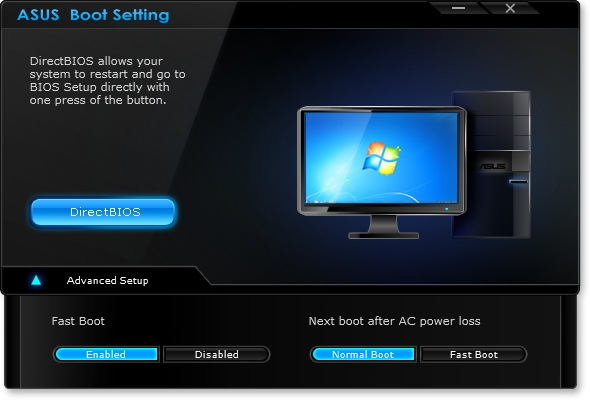
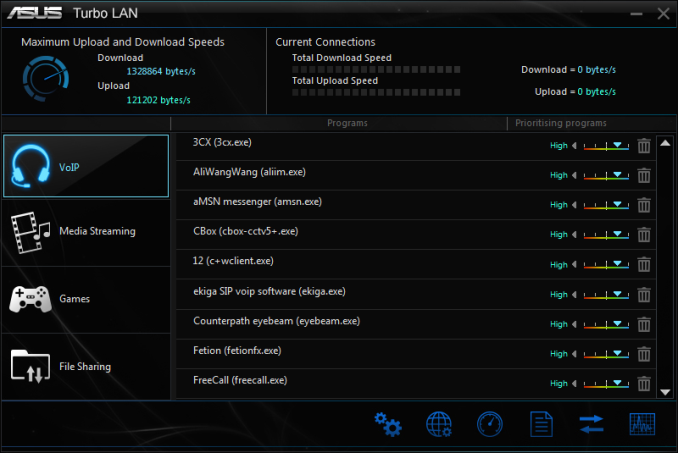
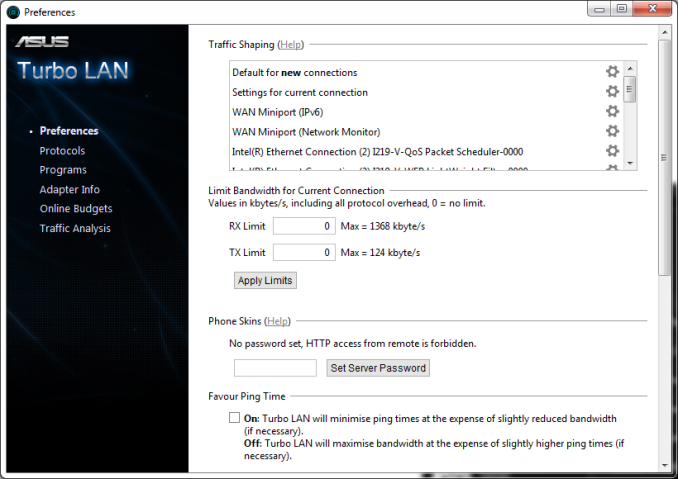
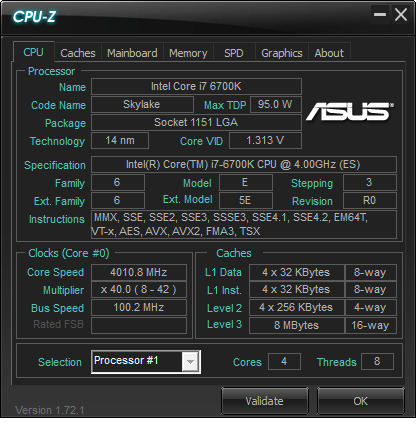
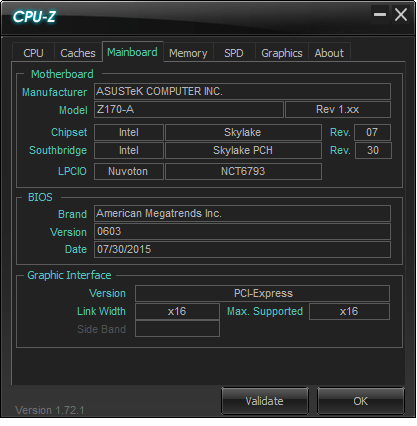

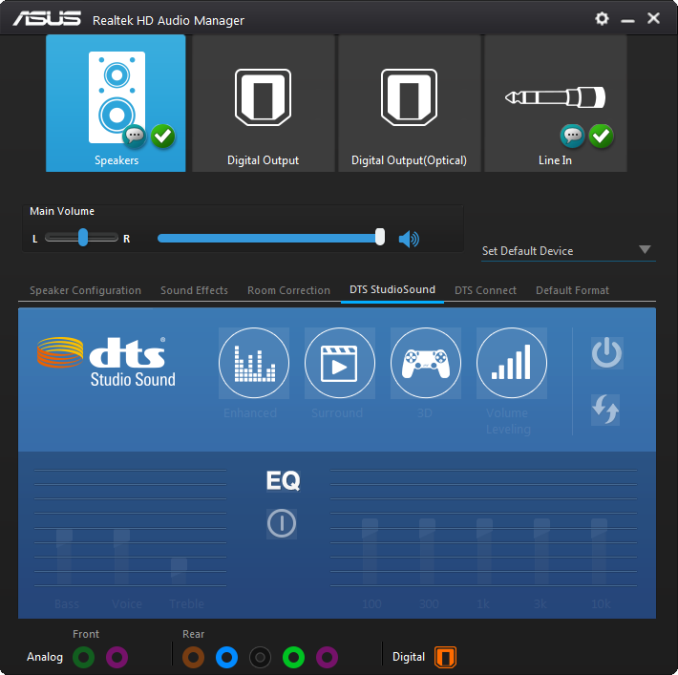
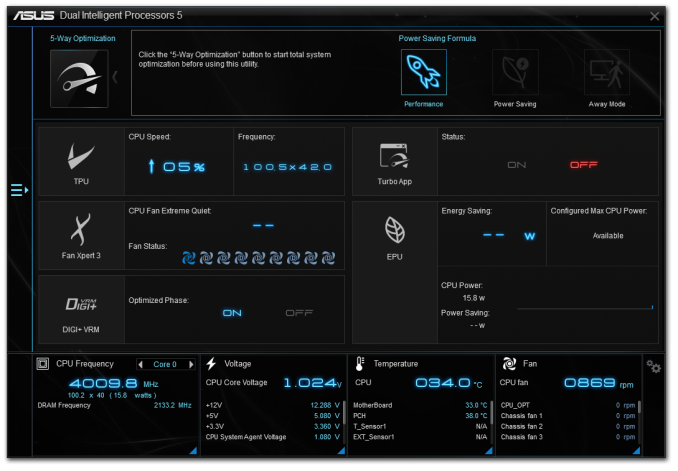
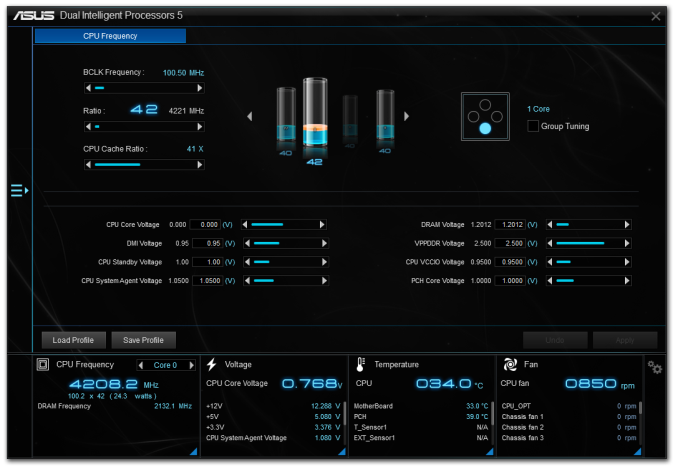
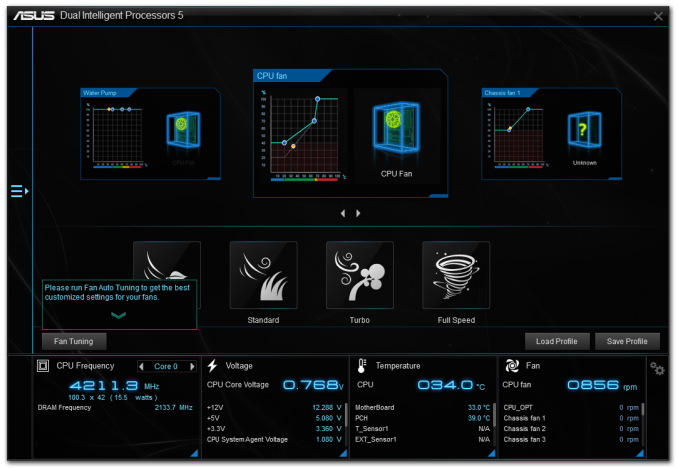
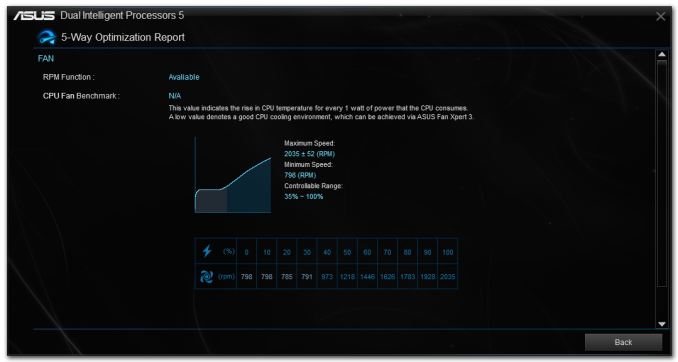
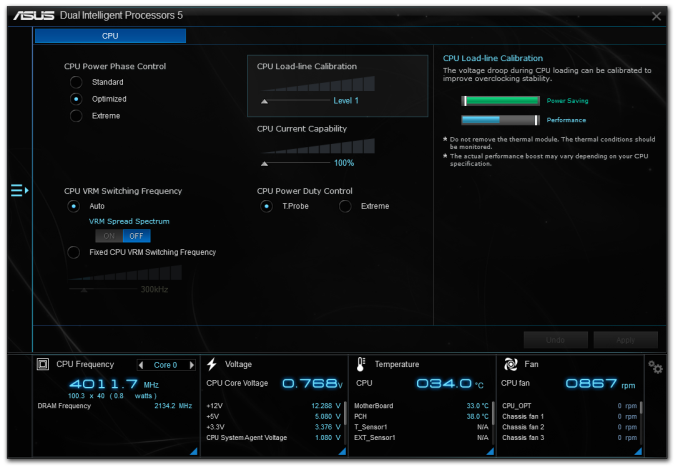
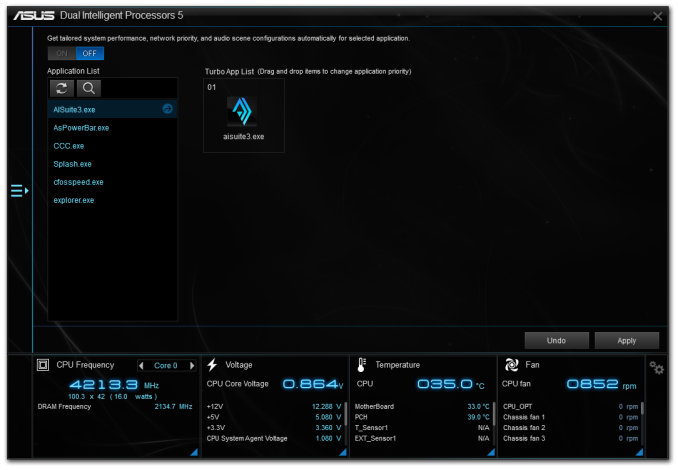
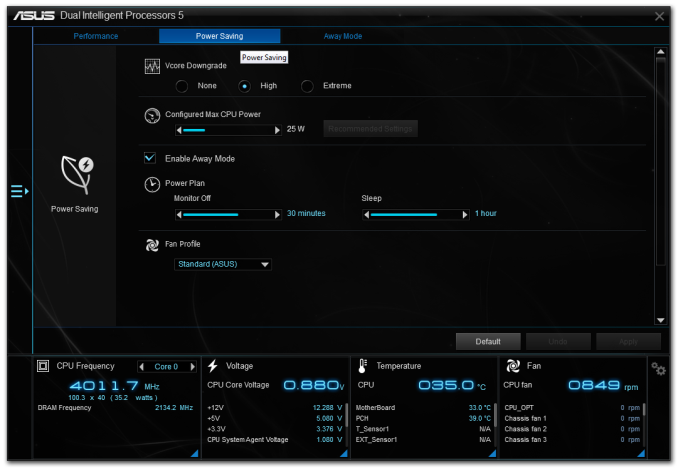
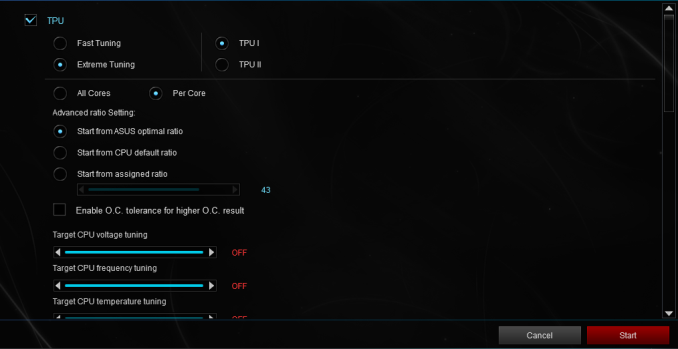
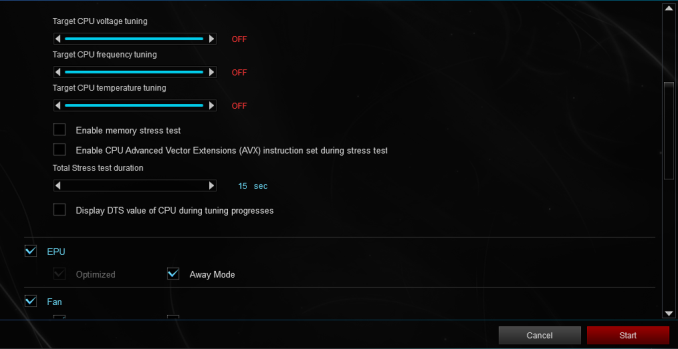
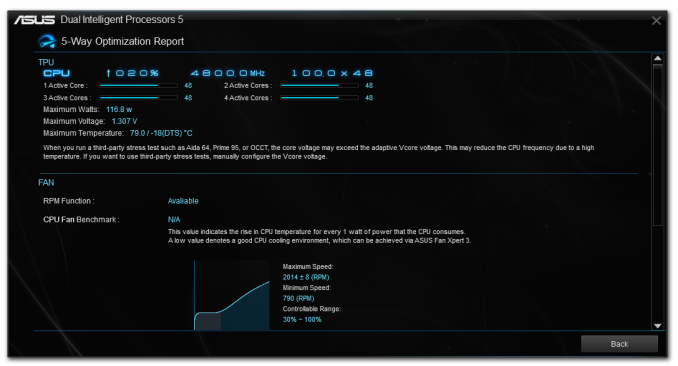
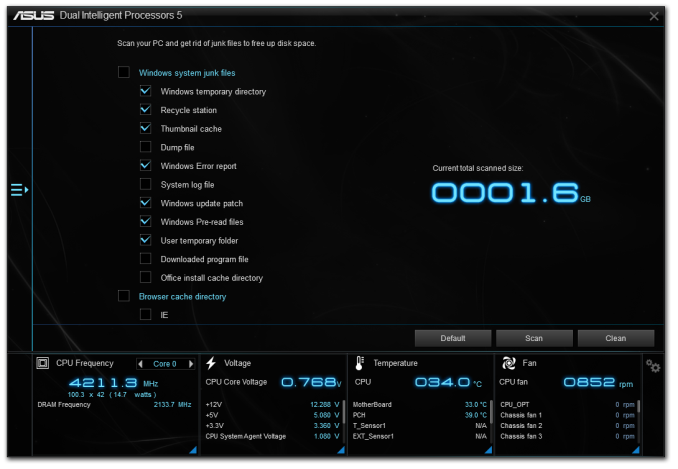














29 Comments
View All Comments
ciderrules - Tuesday, October 20, 2015 - link
This is the MB I bought for my new Skylake system. Always had good luck with ASUS in the past, and it's performed well so far with no issues noted (crosses fingers).Only complaint (and it's not really a fault) is it feels a little "flimsy/flexible", as if the board itself wasn't as thick as it could be. Couple with a Dark Rock Pro 3 heatsink in a tower case, and suddenly there's a lot of stress on the MB causing it to flex from the weight of the heatsink. Remedied this by making a small custom bracket from the sink to my case to take some of the weight off.
blppt - Tuesday, October 20, 2015 - link
Sadly, that may be a trend for ASUS's lower end stuff---the Z97-E I picked up a while back had a flimsy-feeling PCB, and slightly loose SATA connector housings. Havent had a single problem with it yet, but that cheap feeling is not exactly a great first impression.By contrast, the similarly-priced Z97X-Gaming 7 from Gigabyte I bought for my other Intel box felt much sturdier.
Samus - Wednesday, October 21, 2015 - link
It isn't a trend of Asus. This is industry-wide. There is no longer a need for 10 layer PCB's. With so much integrated into the CPU and everything being such low power, most reference designs are only 4-6 layers thick anymore. All of these first-out products are heavily based on, if not nearly identical too, the chipset reference. In a few months we may start seeing more "creative" boards of higher caliber.Billie Boyd - Friday, November 27, 2015 - link
There are a couple of good MB that I can recommend and some of this are seen on http://www.consumerrunner.com/top-10-best-desktops... too.Kutark - Sunday, November 1, 2015 - link
I used to be a dyed in the wool Asus guy, until around 2007 or so. The last few builds I did for myself and for friends from around 2005-2007, in 6 systems we had 4 Asus boards go bad within 1-6 months of use. By then I switched to Gigabyte and in over 13 MB's I've only had an issue with 1 (the IDE controller started going out), which was RMA'd and replaced.BillyONeal - Tuesday, October 20, 2015 - link
Ooh. I like the "Other AnandTech Reviews for Intel’s 6th Generation CPUs" inset.Oogle - Tuesday, October 20, 2015 - link
FYI, as of this post, the 14-1 pin TPM connector has no part that can fit it. So in order to do bitlocker on your system drive, you will need a password or usb drive to access the drive on boot.PVG - Tuesday, October 20, 2015 - link
My board of reference in this price bracket is the ASRock Z170 Extreme4. It offers a bit more for the same money.jabber - Wednesday, October 21, 2015 - link
Just wish some of them would drop the VGA/DVI sockets. Hate having legacy stuff I'll never use, bad enough with built in audio.Gigaplex - Friday, November 6, 2015 - link
I agree with VGA, but I still use DVI. I find HDMI a pain to use, as everything keeps trying to be too clever, assuming some percentage of overscan or understand, using the wrong pixel format (YUV vs RGB) etc. My monitors aren't new enough for DisplayPort, so it's DVI for me.